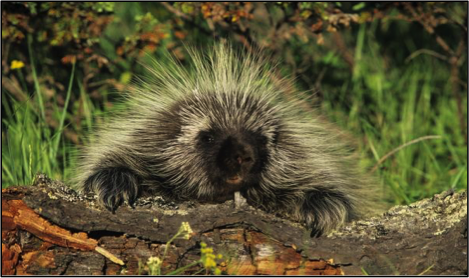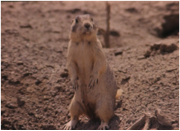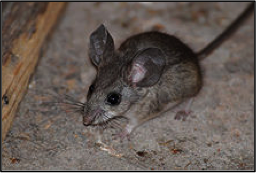Rodents make up most of the animal diversity in the Grand Canyon, but human-caused changes to the environment favor some rodent species over others.
Animals in the Grand Canyon
The majority of mammalian diversity in the Grand Canyon is found in the small mammal species. The 45 rodents make up more than half of the 89 vertebrate animals known to live in the park, with the second largest group being bats (20 species). Usually when we think of animals in national parks, our minds immediately go to wolves or deer because they are big and familiar. However, according to the actual numbers of species or individuals, we really should be thinking about smaller animals such as mice and chipmunks.
What types of rodents?
The term “rodent” refers to the order Rodentia, which is characterized by mammals with a pair of incisors on each of their upper and lower jaws that grow continually. Rodents in the Grand Canyon include mice, rats, voles, chipmunks, gophers, squirrels, and larger animals such as beavers and porcupines. These rodents range in size from the smallest, weighing about as much as a AA battery, to the largest that can weigh as much as a medium-sized dog.


What factors affect the success of a specific rodent?
Just as humans have some basic needs to live happily and healthily, rodents also depend on certain natural factors in their habitat. Different species have very different preferences and behaviors: beavers live in the water and eat bark, kangaroo rats live in the ground and forage for seeds, and tree squirrels live in the trees and collect seeds from pine cones. In addition, within each habitat there may be more specific preferences such as certain squirrels that may prefer pine trees over other tree types.
Natural and human-caused enironmental changes may encourage rodent populations to dwindle or relocate. Rodents that live underground may populate areas that aren’t prone to flooding, but when global temperatures rise and more frequent or stronger rainfall events cause unpredictable flooding, rodents are likely to be swept away or drowned.
The Grand Canyon is an arid environment that experiences periodic rainfall events that promote productivity of food sources. While some circumstances of less food productivity is expected and tolerated, if rodents routinely can't find food then they may seek alternative habitats. Some species may be more lenient about what types of vegetation or resources they require to live, but others may see population declines if food availibility decreases.
How are humans affecting rodent habitats?
In recent decades, humans managing the Grand Canyon have altered the land immensely. Wild fires, flooding, erosion, and predators are inconvenient for humans who want to use the Grand Canyon for resources and tourism and areas nearby for cattle grazing,. Therefore, land management can become much more problematic.
For example, the Glen Canyon Dam prevents the river from flooding annually as it would naturally, keeping beaver populations low. Beaver dams that are built along the river used to be destroyed by the yearly floods, but without the floods beaver populations have increased. In response, rodent species that thrive near beaver dams may also see population increases.

Prairie Dogs Aren’t Pests
Prairie dogs were considered pests of rangelands because their burrows are large enough for cattle to step into and injure themselves, and because some rodents eat grass, straining food sources for the cattle. To improve cattle production, land managers often eradicate prairie dogs. Many land managers encouraged hunting and poisoning of prairie dogs. However, eradication of this large rodent has negative effects on smaller rodent species that depend on prairie dog burrows for their habitats. Prairie dogs also serve as a food source for hawks, eagles, ferrets, badgers, and coyotes. Ongoing conservation efforts have caused increases in prairie dog populations and, subsequently, the diversity of mammals in the park have also increased.

Lumber and Pinyon Mice
In contrast to the prairie dogs, which were hunted and poisoned, pinyon mice populations have decreased because the tree harvesting depleted their habitat and food source. Pinyon mice live in pinyon-juniper forests, eating juniper seeds and pinyon nuts. A 2006-2007 survey in Idaho found that the pinyon mice and other rodents depend on old-growth juniper-pinyon woodlands. If pinyon mice in the Grand Canyon also depend heavily on old-growth juniper-pinyon woodlands, then humans will have a difficult time helping the population to recover.
How can we help?
Always remember that we share land with animals, and they should be able to behave naturally as opposed to conveniently for humans. Recently the park has made some decisions to return the vegetation and animals to more natural states. Take note of signs in the park suggesting that visitors stay on the trails and pick up after themselves. Also refrain from hand-feeding more daring and cheeky animals, such as squirrels. Not only is it harmful for the squirrel to depend on humans for food, and to eat unnatural foods, but squirrel bites are also the leading cause of injury to park visitors. The best way to get involved is to be proactive. Try to find volunteering experiences with the National Park Service or scientists who work in the park who are involved in wildlife conservation.

References Considered:
Keinath, Douglas. “Species assessment for white-tailed prairie dog (Cynomys Leucurus) in
Wyoming.” United States Department of the Interior. Bureau of Land Management:
Wyoming State Office, Cheyenne (2004):
http://www.blm.gov/pgdata/etc/medialib/blm/wy/wildlife/animal-assessmnts...
Kotler, Burt P., and Joel S. Brown. "Environmental heterogeneity and the coexistence of
desert rodents." Annual Review of Ecology and Systematics (1988): 281-307.
Munger, James C., Michael A. Bowers, and W. Thomas Jones. "Desert rodent populations:
factors affecting abundance, distribution, and genetic structure." Great Basin
Naturalist Memoirs (1983): 91-116.
Rodhouse, Thomas J., Robert P. Hirnyck, R. Gerald Wright. “Habitat selection of rodents
along piñon-juniper woodland-savannah gradient.” Journal of Mammalogy (2010): 91 (2) 447-457; DOI: 10.1644/09-MAMM-A-060.1
